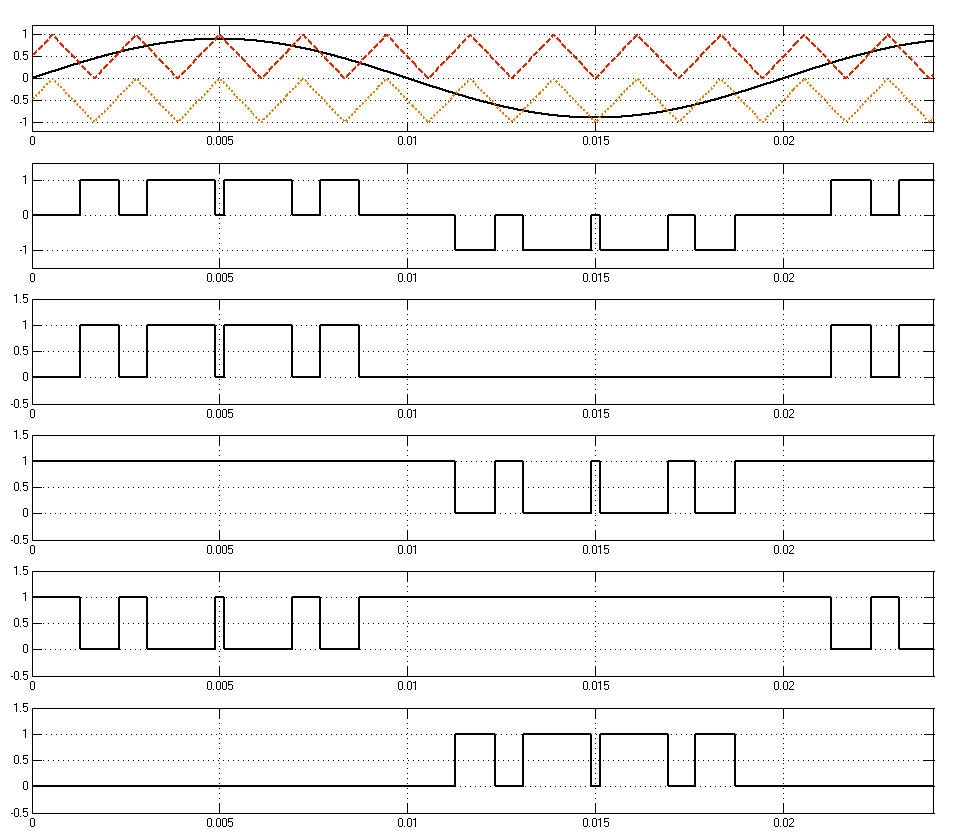PWM Generator (3-Level)
(To be removed) Generate pulses for PWM-controlled three-level converter
The Specialized Power Systems library will be removed in R2026a. Use the Simscape™ Electrical™ blocks and functions instead. For more information on updating your models, see Upgrade Specialized Power System Models to use Simscape Electrical Blocks.
Libraries:
Simscape /
Electrical /
Specialized Power Systems /
Power Electronics /
Power Electronics Control
Description
The PWM Generator (3-Level) block generates pulses for carrier-based pulse-width modulation (PWM) converters using three-level topology. The block can control switching devices (FETs, GTOs, or IGBTs) of three different converter types: single-phase half-bridge (one arm), single-phase full-bridge (two arms), or three-phase bridge (three arms).
The reference signal (Uref input), also called the modulating signal, is naturally sampled and compared with two symmetrical level-shifted triangle carriers.
The following figure shows how the pulses are generated for a single-phase, half-bridge three-level converter.

The converter arm can have three states: +1, 0, or −1. When the reference signal is greater than the positive carrier, the state of the arm is +1; when the reference signal is smaller than the negative carrier, the state of the arm is −1.
Otherwise, the state is 0. Based on the current state of the arm, the appropriate pulses are generated.
| State | Q1 | Q2 | Q3 | Q4 |
|---|---|---|---|---|
| 1 | 1 | 1 | 0 | 0 |
| 0 | 0 | 1 | 1 | 0 |
| −1 | 0 | 0 | 1 | 1 |
One reference signal is required to generate the four pulses of an arm. For a single-phase full-bridge converter, a second reference signal is required to generate the four pulses of the second arm. This signal is internally generated by phase-shifting the original reference signal by 180 degrees. For a three-phase bridge, three reference signals are required to generate the 12 pulses.
The reference signal also can be internally generated by the PWM generator. In this case, specify a modulation index, voltage output frequency, and phase.
Characteristics
| Sample Time | Specified in the Sample Time
parameter Continuous if Sample Time = 0 |
| Scalar Expansion | No |
| Dimensionalized | No |
Ports
Input
Output
Parameters
Extended Capabilities
Version History
Introduced in R2013a